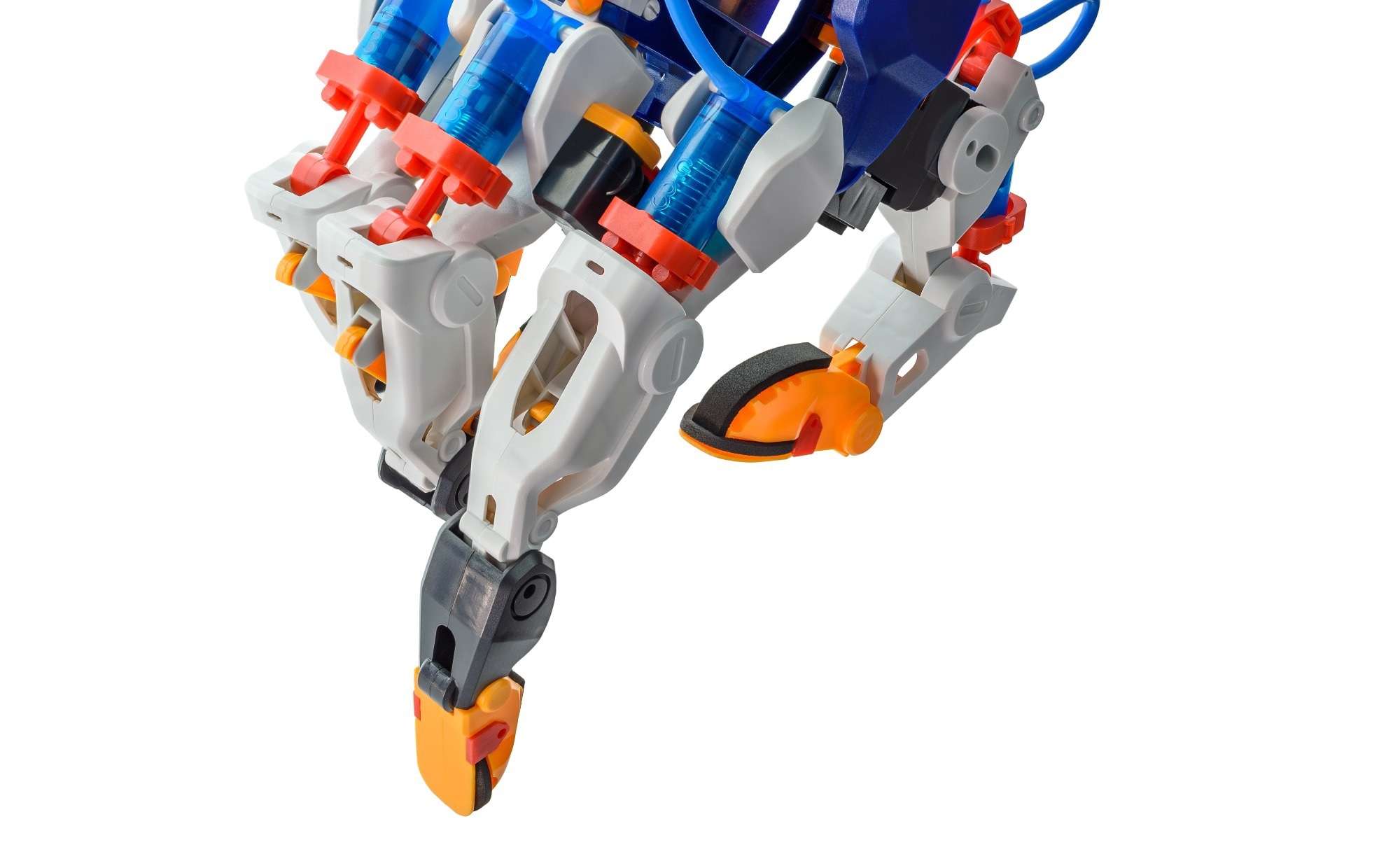In an article published in the journal npj Flexible Electronics, researchers from the Huazhong University of Science and Technology, Wuhan, China, and the North Carolina State University, Raleigh, USA, developed a soft magnetoelectric finger (SMF) that can enable robots to sense and recognize objects in dark or complex environments. They evaluated the performance of the proposed SMF using numerical simulations, machine learning, and black box exploration.
 Study: Soft Magnetoelectric Finger: Enhancing Robotic Tactile Perception. Image credit: William Potter/Shutterstock.
Study: Soft Magnetoelectric Finger: Enhancing Robotic Tactile Perception. Image credit: William Potter/Shutterstock.
Background
Tactile sensing is an important source of information for robots to perceive their surroundings, especially in tasks such as object positioning and recognition. However, most existing tactile sensors for robotic fingers can only detect external forces in a single direction, which limits their potential for further development in navigating complex environments. Previous studies have attempted to achieve multidirectional tactile sensing by using vision-based sensors, Hall element arrays, or Faraday’s law of electromagnetic induction. However, these sensors have drawbacks such as complex structures, rigid materials, external power sources, or low sensitivity.
About the Research
In the present paper, the authors designed an innovative SMF capable of self-generated signals and multidirectional tactile sensing. The model generates self-powered electrical signals when deformed by external forces, enabling it to distinguish the direction and magnitude of applied forces by analyzing signals from the coils. The SMF is inspired by the tactile perception mechanism of the human finger, which involves the generation and transmission of nervous impulses by the tactile receptors in the fingertip skin. To mimic this process, the SMF uses liquid metal coils as the tactile receptors and induced voltage signals as the nervous impulses.
The SMF consists of two parts: a ‘finger’ covered with a skin-like flexible sheath containing five liquid metal coils and a ‘phalangeal bone’ containing a magnet. It works based on the principle of electromagnetic induction, which states that a change in magnetic flux through a coil will induce an electric voltage in the coil. When the SMF is pressed by an external force, the flexible sheath deforms and changes the distance and orientation between the coils and the magnet.
The authors used finite element analysis and electromagnetic simulation to study the deformation and magnetic field distribution of the SMF under different pressing forces. They utilized six common objects with different Young’s moduli as test subjects, including sponge cubes, porous plastics, paperboard, foamed plastics, Ecoflex rubber, and cured resin. Young’s modulus, a measure of material stiffness affecting deformation when force is applied, allows the SMF to contact various objects with the same force and displacement.
Furthermore, the researchers employed the LightGBM classifier, a machine learning algorithm, to train and test a model to identify the six different objects based on the voltage signals generated by the SMF in response to pressing forces. This approach demonstrated the potential for using machine learning to classify objects with distinct material properties using data from the SMF.
Research Findings
The outcomes revealed that the SMF can generate self-powered voltage signals due to changes in magnetic flux through the coils caused by external forces. Analyzing signals from the five coils allows the SMF to distinguish forces in different directions, including normal and shear forces. Furthermore, the SMF can recognize objects with different Young’s moduli.
The performance of the SMF was tested by conducting experiments at various conditions and then comparing it with some state-of-the-art finger-like tactile sensors. The paper highlighted the following advantages:
- High sensitivity and resolution: The SMF can detect forces ranging from 0.04 N to 15 N and distinguishes forces in different directions with a resolution of 0.18 N. Additionally, it can also respond to vibrations within the frequency range of 1 Hz to 6 Hz.
- High flexibility and reliability: Made from soft and stretchable materials, the SMF seamlessly adapts to diverse shapes and surfaces. It demonstrates excellent stability and durability, maintaining peak performance even after 10,000 cycles of compression and recovery.
- Detects forces in different directions: The SMF can observe complex environments and tasks by sensing normal and shear forces.
- Object recognition: With an accuracy of 97.46%, the SMF identifies objects with different Young’s moduli, enabling robots to explore and interact with unknown objects effectively.
- Generates self-powered signals: The SMF does not require an external power source or circuit, simplifying its structure and reducing energy usage.
Applications
The SMF can be applied to fields requiring tactile perception and interaction, such as the following:
Robotics: The SMF can be integrated into robotic arms or hands to enable them to sense and manipulate objects in environments, such as disaster relief, space exploration, or underwater exploration.
Human-machine interaction: Soft and interactive devices can be created that can respond to human touch and gestures, such as wearable devices, smart toys, or virtual reality systems.
Biomedical engineering: Soft and sensitive prosthetic fingers or tactile sensors can be developed for medical diagnosis or treatment, such as tissue palpation, wound healing, or drug delivery.
Conclusion
In summary, this novel SMF can achieve self-generated signals and multidirectional tactile sensing. This device can effectively differentiate forces and identify objects with different Young’s moduli. It can explore a black box with unknown obstacles and objects. Additionally, the SMF can potentially enhance the tactile perception and exploration capabilities of future robots.
The study suggests that further developments are needed to address the challenges such as the dependence of the signal on the compression speed, the limited number of sensing units, and the precision, stability, and cost-effectiveness of the SMF. It also calls for more data processing and machine learning algorithms to improve the performance of the SMF.